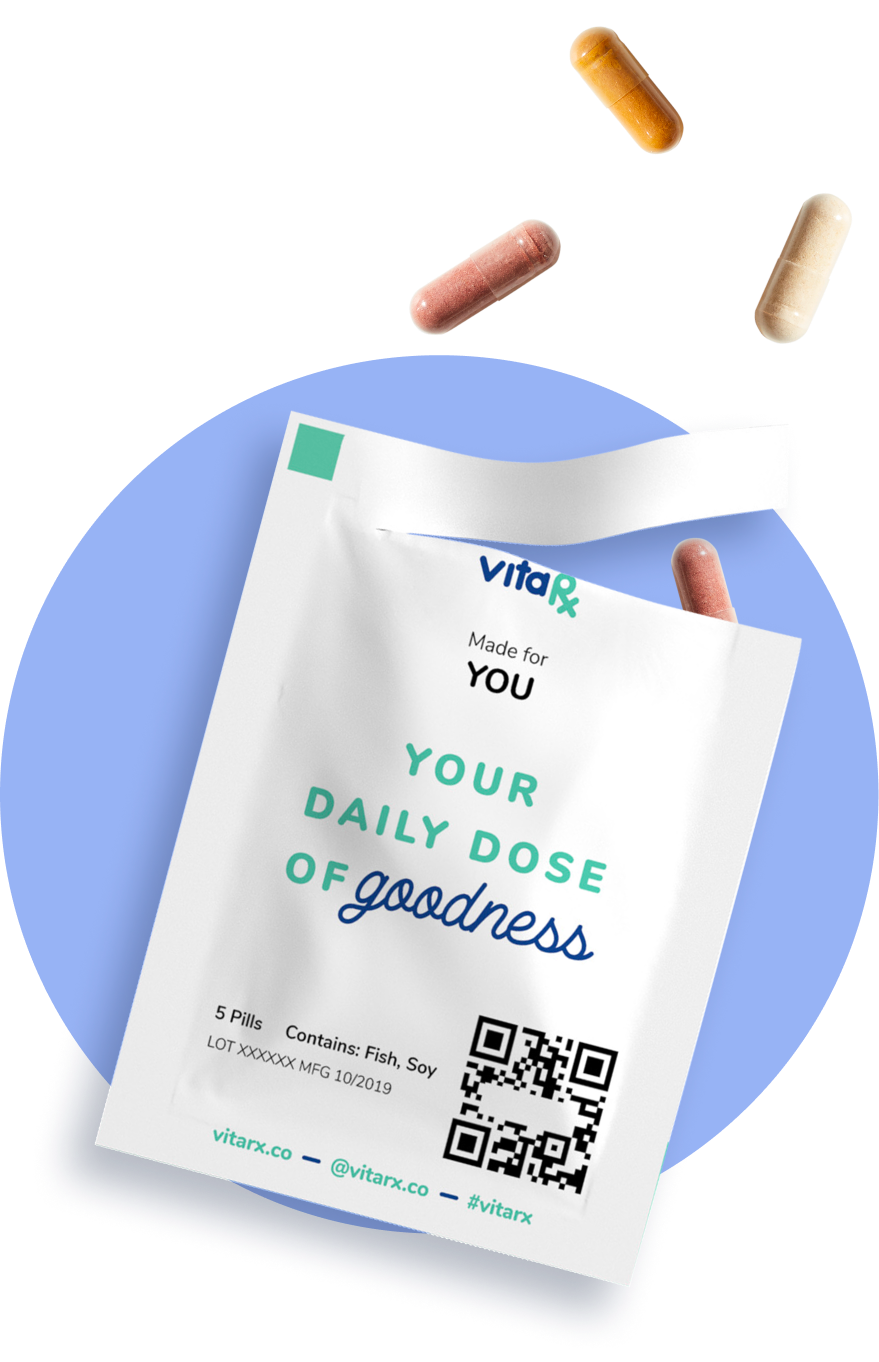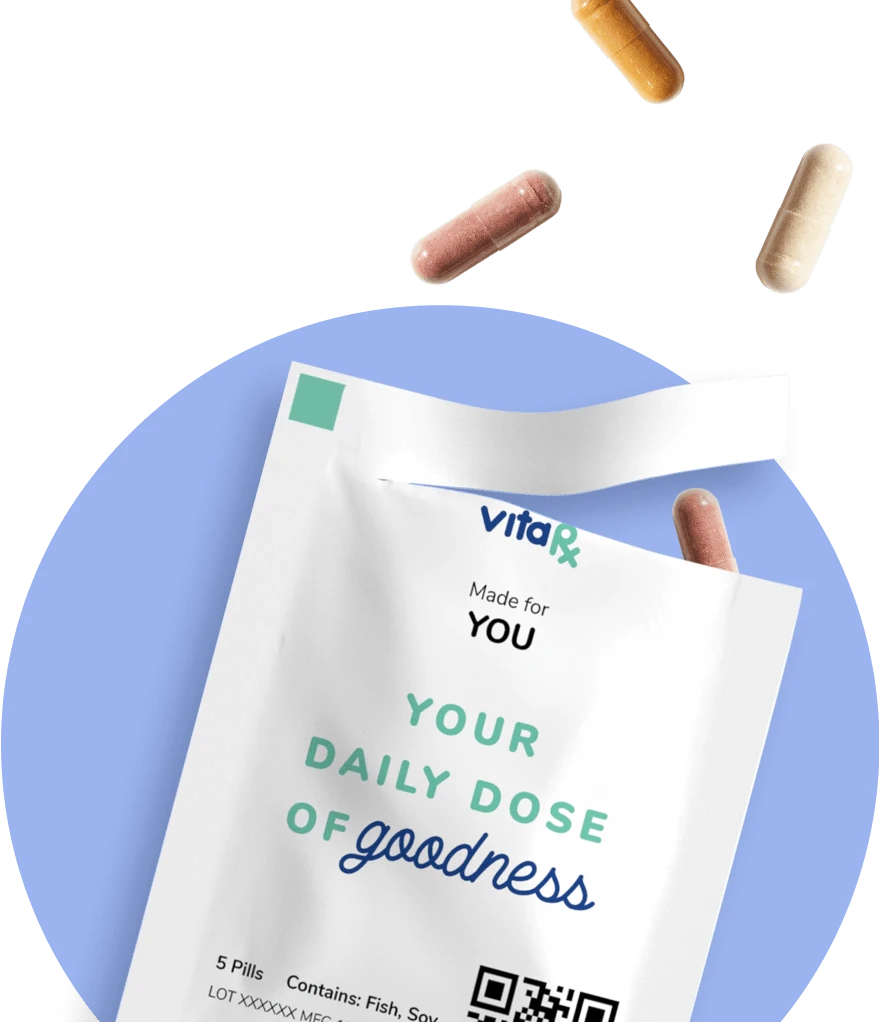Last update: January 22, 2025
4 minute read
The Importance of Vitamin D for Bone Density and Joint Function
Discover why vitamin D is crucial for bone density and joint health. Learn about sources, deficiency risks, and how personalized supplements can support your wellness journey.

By Derick Rodriguez, Associate Editor
Edited by Dr. Dimitar Marinov, MD, RDN, PhD

Are you getting enough vitamin D? This crucial nutrient plays a vital role in maintaining strong bones and healthy joints. But with over 30% of young adults in Australia experiencing some level of vitamin D deficiency, it's clear that many of us aren't meeting our daily needs. Let's dive into why vitamin D is so important and how you can ensure you're getting enough to support your bone and joint health.
Key takeaways
- Vitamin D is essential for calcium absorption and bone health
- Sunlight exposure is the primary source of vitamin D for most people
- Deficiency can lead to osteoporosis and increased fracture risk alongside other issues
The role of vitamin D in bone health
Vitamin D is a crucial player in maintaining strong, healthy bones. Here's how it works:
- Calcium absorption: Vitamin D helps your body absorb calcium from the foods you eat.
- Bone growth and maintenance: It supports the growth and maintenance of your skeleton.
- Blood calcium regulation: Vitamin D helps regulate calcium levels in your blood, which is essential for various bodily functions.
Without adequate vitamin D, your body can't efficiently use the calcium you consume, leading to weaker bones and an increased risk of fractures.
Vitamin D and joint function
While often overlooked, vitamin D also plays a role in joint health. Here's how:
- Muscle strength: Vitamin D promotes healthy muscle function, which is crucial for joint stability and balance.
- Immune system support: It helps regulate the immune system, potentially reducing inflammation in joints.
- Pain reduction: Some studies suggest that adequate vitamin D levels may help reduce joint pain in certain conditions.
The sun-vitamin D connection
Interestingly, your body can produce vitamin D when your skin is exposed to sunlight. In fact, for most people, this is the primary source of vitamin D. However, the amount of sun exposure needed varies based on several factors:
- Location: Your geographical location affects the intensity of UVB rays.
- Season: In winter, it's harder to get enough vitamin D from sunlight in many areas.
- Time of day: Mid-morning or mid-afternoon exposure is often recommended.
- Skin type: Darker skin needs more sun exposure to produce the same amount of vitamin D.
VitaRx Tip
It's important to balance sun exposure for vitamin D production with skin protection against UV damage. Always follow sun safety guidelines when outdoors.
Vitamin D deficiency: Risks and symptoms
When your body doesn't get enough vitamin D, it can lead to several health issues:
- Osteoporosis: Weak, brittle bones that are more prone to fractures.
- Osteomalacia: Painful softening of the bones in adults.
- Rickets: A condition causing soft, weak bones in children.
- Increased fall risk: Due to muscle weakness and poor balance.
Symptoms of vitamin D deficiency can be subtle and may include:
- Bone pain or tenderness
- Muscle weakness
- Increased risk of fractures
- In severe cases, bone deformities
How much vitamin D do you need?
The recommended daily intake of vitamin D varies by age:
Age Group | Recommended Daily Intake |
|---|---|
Adults up to 70 years | 600 IU (15 mcg) |
Adults over 70 years | 800 IU (20 mcg) |
However, people at risk of deficiency may need higher doses. Always consult with your healthcare provider before starting any supplement regimen.

Get your personalized vitamin recommendations in less than 3 minutes.
Get your personalized vitamin recommendations in less than 3 minutes.

Sources of vitamin D
While sunlight is the primary source of vitamin D for most people, you can also get it from:
- Foods:
- Fatty fish (salmon, tuna, mackerel)
- Egg yolks
- Fortified foods (some milk, orange juice, and cereals)
- Supplements:
- Available in multiple forms (tablets, capsules, drops)
- Dosage should be determined by a healthcare professional
Advantages and disadvantages of vitamin D supplementation
Here are some of the pros and cons of vitamin D supplementation for bone and joint health.
Frequently asked questions (FAQ)
Here are some of the most frequently asked questions about vitamin D supporting bone and joint health.
Final thoughts
Vitamin D plays a crucial role in maintaining strong bones and healthy joints. While sunlight remains the primary source for most people, many people may need additional support through diet or supplementation. By ensuring adequate vitamin D levels, you're taking an important step in protecting your long-term bone and joint health.
Remember, everyone's needs are different. Consult with a healthcare professional to determine the best approach for your individual situation. And don't forget to check out our personalized vitamin packs to support your journey towards optimal bone and joint health.
Sources and references
- Evidence of low vitamin D intakes in the Australian population points to a need for data‐driven nutrition policy for improving population vitamin D status - PMC
- Vitamin D and Human Health - PMC
- Sports Health Benefits of Vitamin D - PMC
- Vitamin D and inflammatory diseases - PMC
- Vitamin D in Pain Management - PMC
- (PDF) Literature review SUPPLEMENTATION WITH VITAMIN D -CURRENT RECOMMENDATIONS
Editor

Derick Rodriguez
Derick Rodriguez focuses on editing health and wellness-related content. With over half a decade of experience in the digital realm, Derick has developed a unique skill set that bridges the gap between complex health concepts and accessible, user-friendly communication. His approach is deeply rooted in leveraging personal experiences and insights to illuminate the nuances of health and wellness topics, making them more approachable and empowering readers with knowledge and confidence.
Fact checker

Dr. Dimitar Marinov
Dr. Marinov has years of experience in scientific research and preventive and clinical medicine. His publications in peer-reviewed journals are on nutritional status, physical activity, and musculoskeletal disorders among adolescents.
At VitaRx, we're not just passionate about our work — we take immense pride in it. Our dedicated team of writers diligently follows strict editorial standards, ensuring that every piece of content we publish is accurate, current, and highly valuable. We don't just strive for quality; we aim for excellence.
Related posts
While you're at it, here are some other relevant articles you might be interested in.

Get your personalized vitamin recommendations in less than
5 minutes.
Get your personalized vitamin recommendations in less than
5 minutes.




